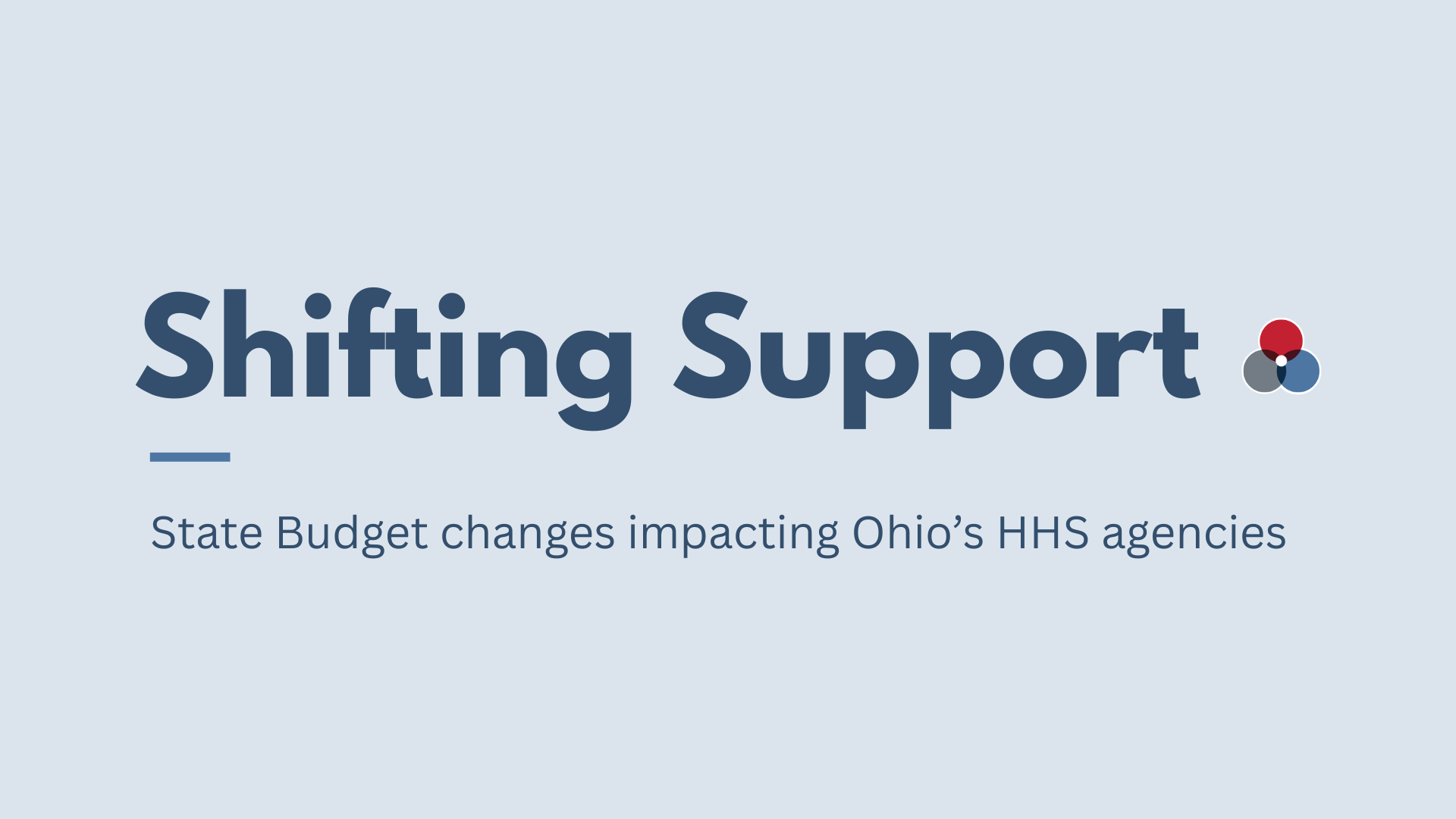New Opportunities to Improve Linkages between Health and Justice Systems
By: Dan Mistak, Guest Author & Director, Community Oriented Correctional Health Services
Key Findings
- Many people involved with the justice system are incarcerated due to unmet behavioral health needs. Despite the overwhelming majority of incarcerated people being Medicaid eligible, they lose access to services once incarcerated due to a provision in the federal Medicaid statute called the “inmate exclusion.”
- The disruption of access to services creates a cycle of reincarceration that increases the costs for state and county agencies and frustrates attempts of local communities to create sustainable and continuous systems of care for vulnerable populations.
- In April of 2023, the federal government, for the first time, invited states to propose a waiver of the inmate exclusion that would allow for federal dollars to pay for services while people are incarcerated and reinvest the cost savings into improving care before, during, and after incarceration.
- Cuyahoga County is well positioned to take advantage of this opportunity because the MetroHealth System offers services in the county jail and the community. An approved waiver would provide a stable foundation to expand access to services and create an improved system of care that would save the state and county money while improving continuity of care.
Introduction: Expansion, innovation, and enrollment
In the justice system, there is a common cycle: people enter the justice system with pre-existing health issues, experience deteriorating conditions during their incarceration, and ultimately return to their communities without the support necessary for a stable life beyond bars. Many of these people would never enter the justice system except for their untreated behavioral health conditions, and this lack of support often leaves people back into the behaviors that led to their incarceration. This cycle places a substantial burden on communities and families throughout Ohio.
Many of these people would never enter the justice system except for their untreated behavioral health conditions.
Long-term solutions to this problem can be challenging to implement due to statutory and regulatory obstacles that have segregated community and correctional health settings. This segregation impedes the efforts of policymakers to establish a seamless continuum of care bridging community and carceral settings. However, these barriers are now being dismantled, offering Ohio a unique opportunity to leverage these changes for the betterment of incarcerated individuals' health, bolstering the state's physical and behavioral health systems, and achieving substantial cost savings.Recognizing the need to address healthcare disparities among its underserved population, Ohio expanded Medicaid access in 2014. Notably, this allowed a large proportion of individuals involved in the justice system to qualify for Medicaid for the first time. Nevertheless, once these eligible individuals are incarcerated, their access to Medicaid services is terminated or suspended, and they often encounter significant hurdles when attempting to reinstate their Medicaid eligibility upon release. This predicament arises from the so-called "inmate exclusion" within the Social Security Act, which denies Medicaid services to otherwise eligible individuals when they are deemed "inmates of a public institution." The inmate exclusion makes it challenging for justice-involved individuals to secure access to essential services before leaving incarceration and to continue access to those services after being released from care. This lack of continuity of care bolsters the cycle of rearrest.[1]
The inmate exclusion makes it challenging for justice-involved individuals to secure access to essential services before leaving incarceration and to continue access to those services after being released from care.
Ohio has been at the forefront of Medicaid innovation, striving to bridge the gap for individuals leaving incarceration by launching the Medicaid Pre-Release Enrollment (MPRE) program in collaboration with the Ohio Department of Rehabilitation and Correction since 2014. While this program succeeded in enrolling individuals in Medicaid, those leaving incarceration continue to face challenges in accessing and maintaining the care they received during their incarceration.[2]Enrolling individuals upon their release is a solid foundation for addressing their health needs as they leave incarceration. Ohio has a new opportunity to build upon this foundation by establishing connections to healthcare and services even before individuals leave incarceration, through new guidance issued by the Centers for Medicare and Medicaid Services that would allow the state to waive portions of the inmate exclusion through a Medicaid 1115 waiver. This document explores the health status of incarcerated individuals, the adverse consequences of the inmate exclusion, such as increased healthcare costs, reduced public safety, and obstacles to reintegration, particularly regarding access to opioid treatments. It also highlights Ohio's potential to create an enhanced continuum of care that improves health outcomes and reduces costs.
Health Status of Incarcerated Individuals
People involved in the justice system often exhibit severe health needs, leading to costly incarceration stays and straining the healthcare systems that serve them during periods of non-incarceration. County-level data from across the United States underscores a strong correlation between incarceration and increased premature death rates, stemming from infectious diseases, chronic lower respiratory diseases, drug use, and suicide.[3] Additionally, a significant portion of individuals in state and federal prisons, as well as jails, have a history of mental illness.[4] Ohio, in particular, witnessed a 109 percent increase in drug-related arrests from 2004 to 2018.[5] Additionally, incarceration itself contributes to various negative health consequences, such as increased rates of chronic diseases, mental health problems, and substance abuse, all of which require community support. A report by the National Academies of Sciences, Engineering, and Medicine highlights that untreated health problems can lead to increased healthcare costs both during and after incarceration.[6]
Health issues follow when individuals return to community
While incarcerated individuals face substantial health challenges in correctional facilities, these health conditions continue to affect them upon their return to the community. Nearly all individuals eventually exit incarceration, whether through bail, dropped charges, or sentence completion. In the first two weeks following their reentry, the mortality rate for these individuals is a startling 12 times higher than that of the general public.[7] Upon release, many individuals fail to seek primary care, resorting instead to emergency departments at higher rates.[8] Incarceration is costly, and the challenges in reconnecting individuals to services upon release also come with a financial burden.
Coverage loss due to the inmate exclusion
Addressing the health needs of incarcerated individuals is particularly complex due to statutory limitations on the funding of services during incarceration. Ohio recognized the importance of expanding Medicaid as a vital tool in combatting the opioid epidemic and enhancing the healthcare system. Yet, a provision within Medicaid eligibility statutes dictates that individuals lose Medicaid coverage the moment they are incarcerated. Termed the "inmate exclusion," this provision has been a focal point for policymakers and advocates in both the healthcare and justice sectors. This coverage loss creates significant obstacles for accessing Medicaid benefits upon release, renewing life-saving prescriptions, and reconnecting with healthcare providers from the pre-incarceration period.On April 17, 2023, the Centers for Medicare and Medicaid Services (CMS) released guidance mandated by Section 5032 of the 2018 SUPPORT Act, signed into law by President Trump. This guidance offers states the opportunity to waive a portion of the inmate exclusion through the creation of what is called an 1115 waiver. A Medicaid 1115 waiver is a demonstration project that allows states to experiment with different ways to deliver and pay for Medicaid services. Waivers are approved by the CMS and must be budget neutral, meaning that they cannot cost the federal government any more money than the state would have spent without the waiver. In Ohio, an 1115 waiver must be approved by the state legislature. The aim of the waiver is to enhance care and coordination before release and reduce costs during transitions. An 1115 waiver presents a compelling avenue for Ohio to improve care for individuals within the justice system and establish more robust care options that save the state money.
A Medicaid 1115 waiver is a demonstration project that allows states to experiment with different ways to deliver and pay for Medicaid services.
The CMS guidance provides states with broad flexibility to expand services for eligible individuals in carceral settings. States can choose to offer all Medicaid services to eligible individuals or focus on specific services to specific beneficiaries up to 90 days before release.While the state has considerable leeway in choosing the services to offer, each waiver must include:
- All FDA-approved substance use disorder (SUD) treatment modalities.
- At least 30 days of bridge medication for those leaving incarceration.
- Targeted case management.
This waiver enjoys significant support, with California and Washington already having their waivers approved and in the implementation phase, and several other states working on tailored waivers to meet their state’s specific goals.
Ohio’s waiver system could address inmate exclusion
1115 waivers are powerful tools for tailoring Medicaid programs to a state's unique needs. Ohio is in a prime position to create a waiver that addresses significant challenges and costs within its healthcare and justice systems. Such a waiver would further Ohio's leadership in establishing connections to services and improve the stewardship of public funds by reducing care discontinuities for individuals entering and leaving incarceration.Studies from around the country, including Ohio, emphasize the potential benefits of waiving the inmate exclusion. These benefits encompass reduced healthcare costs, enhanced public safety, and better outcomes for individuals, families, and communities entwined with the justice system.A justice-focused 1115 waiver promises to reduce healthcare costs by strengthening connections to community services and lessening the economic strain on local communities. Incarceration is a costly endeavor, with the Health Policy Institute of Ohio estimating the annual cost of incarcerating one person at $30,558.[9] In Ohio, the state spends approximately $5,023 per person annually for correctional health services, compared to $2,400 for an uninsured individual in the general population.[10] These higher costs are attributed to the prevalence of chronic diseases and mental health issues among incarcerated individuals. Costs for healthcare services during incarceration are shouldered by local or state governments, and the care received is often siloed and fragmented, leading to increased spending and fewer opportunities to manage care across providers. By incorporating justice settings into the broader Medicaid system, the federal government will pay a significant portion of the healthcare costs and weave these services into the broader set of services available to people in the community.Improving health outcomes holds both direct and indirect implications for public safety. Expanded Medicaid coverage has been linked to a significant reduction in rearrest rates, with a sixteen percent decrease in arrests for violent crimes during the two years following release.[11] These effects might be a result of improved reintegration outcomes when individuals leave incarceration. The inmate exclusion has historically presented challenges for timely Medicaid enrollment, affecting the ability to refill prescriptions and consult with healthcare providers. Given the worse health status and outcomes of incarcerated individuals compared to the general population, access to care is vital for supporting the health and social needs of those leaving incarceration. By avoiding the need to reinstate benefits and reestablish a relationship with a provider, people will be able to focus on the tasks necessary to live meaningful lives outside of incarceration.
New expenditures and reinvestment
Apart from enhancing the delivery of care within carceral settings and facilitating linkages to services upon release, the CMS guidance provides significant flexibility for technological improvement and investment in services and linkages. The guidance mandates that states create a reinvestment plan for the total federal matching funds received for services under the demonstration, which can be directed towards activities and initiatives enhancing access to or the quality of healthcare services for incarcerated individuals (including those soon-to-be released) or health-related social services that may divert individuals from criminal justice involvement.This creates substantial opportunities for system transformation to ensure that someone is never incarcerated to begin with. CMS has also allowed for new expenditures aimed at improving outdated technology systems, enhancing connectivity with community technology systems, and meeting Medicaid's requirements for reporting, quality, and patient privacy. By allowing for investment in technology and diversion, an 1115 waiver provided significant resources for transformation of community and carceral health systems.
Cuyahoga County offers an opportunity to test the approach
Cuyahoga County operates Ohio's second-largest county jail, with an official capacity ranging from 1,765 to 1,880 inmates. As of the end of 2022, the inmate population at the Cuyahoga County Corrections Center was 1,635. The two current corrections buildings, part of the Justice Center in downtown Cleveland, were built in 1976 and 1994. Currently, the Cuyahoga County government is actively planning the construction of a new county corrections center, with estimated costs exceeding $750 million.
70 percent of the Cuyahoga County jail population is diagnosed with some form of mental illness.
In 2019, the MetroHealth System assumed responsibility for healthcare services at the Cuyahoga County Corrections Center. MetroHealth now conducts over 1,000 primary care and sick visits each month. MetroHealth has also implemented the EPIC electronic health record system in the jail, the same system used by the Cleveland Clinic and University Hospitals. Since May 2019, when MetroHealth took over operations, clinical volume has increased by more than 80 percent. Notably, MetroHealth reports that "70 percent of the jail population is diagnosed with some form of mental illness," making the jail's medical staff one of the largest inpatient mental health providers in the state. Addressing untreated mental illness and substance use disorders is crucial for reducing jail recidivism.The confluence of changes in federal Medicaid policy, the new corrections center planning in Cuyahoga County, and MetroHealth's role in delivering high-quality correctional medicine with an electronic health care record presents a unique opportunity to test a justice-focused 1115 Medicaid demonstration waiver. Potential benefits of this demonstration include improving individual health, reducing correctional recidivism to generate savings for Cuyahoga County, and lowering emergency department (ED) visits and inpatient hospitalizations among recently incarcerated Medicaid enrollees, which would result in downstream savings for the Ohio Department of Medicaid. Other potential benefits encompass:
- Increasing coverage and continuity of Medicaid coverage, and appropriate service use.
- Enhancing access to services before release, thus improving transitions and continuity of care upon community reentry.
- Improving coordination and communication between correctional systems, Medicaid systems, managed care plans, and community-based providers.
- Boosting investments in healthcare and related services to enhance the quality of care for incarcerated individuals and those in the community post-release.
- Strengthening connections between correctional settings and community services upon release to address physical health, behavioral health, and health-related social needs (HRSNs).
- Reducing all-cause deaths in the immediate post-release period.
- Creating opportunities to reinvest off-set local dollars into diversion opportunities that can reduce the number of people incarcerated.
Notably, MetroHealth is the sole health system in Ohio to have successfully implemented a Medicaid 1115 demonstration waiver. In 2013, Ohio, in partnership with MetroHealth and Cuyahoga County, received an 1115 waiver from the CMS to establish the MetroHealth CarePlus program, providing early Medicaid coverage to approximately 28,000 individuals with family incomes at or below 133 percent of the federal poverty level. Within a year, measurable improvements in diabetes and hypertension were observed, while care costs were 29 percent below CMS budget caps.
Cuyahoga County government and the MetroHealth System should initiate discussions with the Ohio Department of Medicaid regarding the development of a phased in justice-focused 1115 waiver.
Cuyahoga County government and the MetroHealth System should initiate discussions with the Ohio Department of Medicaid regarding the development of a phased in justice-focused 1115 waiver, beginning in Cuyahoga County. This waiver could include a "waiver of statewide-ness," allowing for a demonstration project in specific communities before statewide implementation. Other states seeking waivers have pursued similar statewide-ness waivers. This approach offers the advantage of closer monitoring and controlled testing before statewide rollout, like the MetroHealth CarePlus waiver and the expansion of Medicaid statewide.A waiver of this type represents a substantial undertaking for the State, Cuyahoga County and MetroHealth. This work includes defining a benefit package, defining a budget and possible savings (waiver savings must be reinvested back into the program), managing eligibility and payment of claims, understanding IT requirements, creating post incarceration linkages to health care and social determinants of health providers. It could also include planning to provide additional services like peer supports or housing supports. But the combined benefits of improved individual health, and generated savings for local, state, and federal governments are both substantial and long lasting.
Conclusion
Ohio stands to benefit significantly from waiving the inmate exclusion. Creating an 1115 waiver aimed at improving the health of its incarcerated population will reduce the strain on criminal justice and health systems created by the lack of continuity between these systems—offsetting these costs for to federal government. The reinvestment of these offset funds provides the means to create diversion programs that support individuals and their families, leading to more favorable outcomes for all parties involved.Editor’s Note: The Center for Community Solutions believes there are significant new opportunities to improve the overall health and well-being of our community and particularly justice involved individuals because of new federal guidance. We asked Daniel Mistak to consider what opportunities there were for Ohio and Cuyahoga County. Mistak is a Director at Community Oriented Correctional Health Services. Community Oriented Correctional Health Services (COCHS) is a non-profit 501(c)(3) organization founded in 2005 through a grant from the Robert Wood Johnson Foundation, which continues its support for this critical policy change to this day. COCHS works to build connectivity between jails and community health care providers.[1] AJPH, The Inmate Exception and Reform of Correctional Health Care, https://www.ncbi.nlm.nih.gov/pmc/articles/PMC5296706/pdf/AJPH.2016.303626.pdf.).[2] OMRES final report in describing the successes[3]https://www.publichealth.columbia.edu/news/incarceration-strongly-linked-premature-death-u-s[4]https://www.bjs.gov/content/pub/pdf/imhprpji1112.pdf[5] Health Policy Institute of Ohio. “Ohio addiction policy scorecard: Law enforcement and the criminal justice system.” November 6, 2019[6] The Impact of Incarceration on Health” by the National Academies of Sciences, Engineering, and Medicine (2016)[7] NEJM, Release from Prison—A High Risk of Death for Former Inmates, https://www.nejm.org/doi/full/10.1056/NEJMsa064115#t=article[8]https://bmcemergmed.biomedcentral.com/articles/10.1186/1471-227X-13-16[9] “Connections between criminal justice and health,” Health Policy Institute of Ohio, June 2021[10] Prison Health Care Costs and Quality. Pew Charitable Trusts. https://www.pewtrusts.org/en/research-and-analysis/reports/2017/10/prison-health-care-costs-and-quality.[11]https://onlinelibrary.wiley.com/doi/epdf/10.1002/pam.22345).








